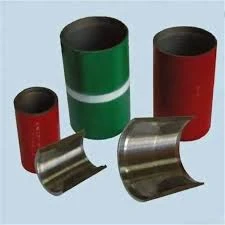- Afrikaans
- Albanian
- Amharic
- Arabic
- Armenian
- Azerbaijani
- Basque
- Belarusian
- Bengali
- Bosnian
- Bulgarian
- Catalan
- Cebuano
- Corsican
- Croatian
- Czech
- Danish
- Dutch
- English
- Esperanto
- Estonian
- Finnish
- French
- Frisian
- Galician
- Georgian
- German
- Greek
- Gujarati
- Haitian Creole
- hausa
- hawaiian
- Hebrew
- Hindi
- Miao
- Hungarian
- Icelandic
- igbo
- Indonesian
- irish
- Italian
- Japanese
- Javanese
- Kannada
- kazakh
- Khmer
- Rwandese
- Korean
- Kurdish
- Kyrgyz
- Lao
- Latin
- Latvian
- Lithuanian
- Luxembourgish
- Macedonian
- Malgashi
- Malay
- Malayalam
- Maltese
- Maori
- Marathi
- Mongolian
- Myanmar
- Nepali
- Norwegian
- Norwegian
- Occitan
- Pashto
- Persian
- Polish
- Portuguese
- Punjabi
- Romanian
- Russian
- Samoan
- Scottish Gaelic
- Serbian
- Sesotho
- Shona
- Sindhi
- Sinhala
- Slovak
- Slovenian
- Somali
- Spanish
- Sundanese
- Swahili
- Swedish
- Tagalog
- Tajik
- Tamil
- Tatar
- Telugu
- Thai
- Turkish
- Turkmen
- Ukrainian
- Urdu
- Uighur
- Uzbek
- Vietnamese
- Welsh
- Bantu
- Yiddish
- Yoruba
- Zulu
bull plug pressure rating
Understanding Bull Plug Pressure Rating in Industrial Applications
In various industrial applications, the integrity and safety of pressurized systems are paramount. One critical component in such systems is the bull plug, a type of fitting used to seal the end of a pipe or valve. Bull plugs are commonly utilized in settings where pressure control and containment are necessary, making their pressure ratings a significant consideration for engineers and operators alike.
What is a Bull Plug?
A bull plug, often referred to as a cap plug, is designed to close off a pipe or fitting. It is typically installed at the termination of a pipeline or equipment to prevent the escape of fluids and gases. Made from durable materials such as metal, plastic, or rubber, bull plugs come in various sizes and configurations to fit different types of piping systems. The suitability of a bull plug for a specific application hinges significantly on its pressure rating.
Pressure Ratings The Basics
The pressure rating of a bull plug indicates the maximum pressure it can safely withstand without failure. Pressure ratings are categorized based on various standards and testing criteria, which may include temperature considerations and the material properties of the plug. Common standards that govern pressure ratings include the American National Standards Institute (ANSI), the American Society of Mechanical Engineers (ASME), and international standards such as ISO.
Understanding pressure ratings is essential for ensuring the safety and reliability of piping systems. When a bull plug operates outside its rated pressure limit, the risk of failure increases significantly, leading to the potential for leaks, equipment damage, and even hazardous spills.
Factors Influencing Bull Plug Pressure Ratings
Several factors influence the pressure rating of bull plugs
bull plug pressure rating

1. Material Composition The type of material used in the construction of the bull plug directly impacts its pressure rating. Metals like stainless steel tend to offer higher pressure ratings compared to plastic plugs.
2. Temperature The operating temperature can affect the strength and integrity of the bull plug. High temperatures may weaken materials, causing them to fail under pressure.
3. Size and Design The dimensions and design of the bull plug also play a critical role. Larger plugs might have varying pressure ratings due to their construction and the way they distribute stress.
4. Manufacturing Standards Compliance with industry standards ensures that the bull plugs meet specific performance benchmarks. Manufacturers often provide detailed specifications regarding the pressure ratings based on rigorous testing.
Importance of Selecting the Right Pressure Rating
Choosing the correct pressure rating for a bull plug is vital for the safe operation of any pressurized system. Inadequate pressure ratings can lead to catastrophic failures, posing safety risks to personnel and costly downtime for operations.
Engineers and operators must assess the operational conditions—such as the type of media being contained, the expected temperature range, and the maximum pressure requirements—before selecting a bull plug. Regular maintenance and inspection can also help ascertain that the installed bull plugs remain within their rated capabilities over time.
Conclusion
In summary, understanding the pressure rating of bull plugs is fundamental for anyone involved in the management and operation of pressurized systems. The right choice not only ensures the safety and functionality of the system but also contributes to the broader objective of operational efficiency and disaster prevention. Investing time in selecting the appropriate bull plug can save both lives and resources in the long run, marking it as a critical component in industrial safety management.
-
Well Casing Extension Couplings – Applications and InstallationNewsJun.06,2025
-
Types of Crossover Subs in Drilling & CompletionNewsJun.06,2025
-
Key Features of High-Quality Tubing Pup JointsNewsJun.06,2025
-
Installation and Maintenance Tips for Steel Couplings for PipeNewsJun.06,2025
-
How to Select the Right Pup Joint for Oil & Gas OperationsNewsJun.06,2025
-
Applications of Stainless Steel Pipe CouplingsNewsJun.06,2025







